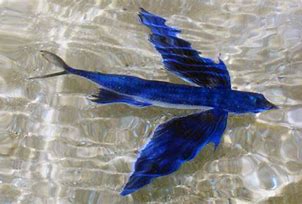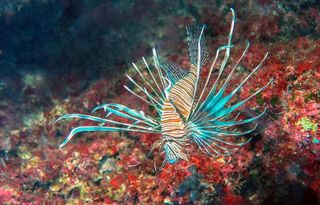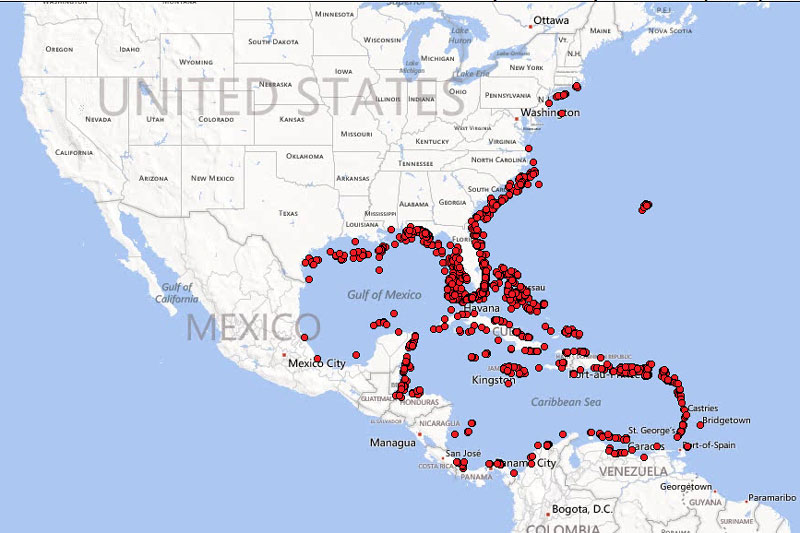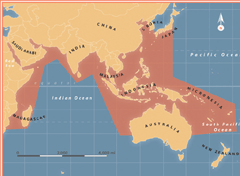Desperado
Diamond Member
- Mar 13, 2012
- 41,421
- 16,580
- 2,300
Follow along with the video below to see how to install our site as a web app on your home screen.
Note: This feature may not be available in some browsers.
Ever been enchanted by John Masefield's words?
Sea FeverMy uncle served in the Navy in WWII, and when he got home, he had aquariums all over his house full of the most beautiful, colorful fish that were completely delightful to me. I'm hoping other people have the love for these colorful creatures and will share their experiences and particular admiration for what caught their eye.
I must go down to the seas again, to the lonely sea and the sky,
And all I ask is a tall ship and a star to steer her by,
And the wheel's kick and the wind's song and the white sail's shaking,
And a grey mist on the sea's face, and a grey dawn breaking.
I must go down to the seas again, for the call of the running tide
Is a wild call and a clear call that may not be denied;
And all I ask is a windy day with the white clouds flying,
And the flung spray and the blown spume, and the sea-gulls crying.
I must go down to the seas again, to the vagrant gypsy life,
To the gull's way and the whale's way, where the wind's like a whetted knife;
And all I ask is a merry yarn from a laughing fellow-rover,
And quiet sleep and a sweet dream when the long trick's over.
View attachment 238023








All things bright and beautiful in the sea. Please add all your favorite things about the sea, won't you?
Ever been enchanted by John Masefield's words?
Sea FeverMy uncle served in the Navy in WWII, and when he got home, he had aquariums all over his house full of the most beautiful, colorful fish that were completely delightful to me. I'm hoping other people have the love for these colorful creatures and will share their experiences and particular admiration for what caught their eye.
I must go down to the seas again, to the lonely sea and the sky,
And all I ask is a tall ship and a star to steer her by,
And the wheel's kick and the wind's song and the white sail's shaking,
And a grey mist on the sea's face, and a grey dawn breaking.
I must go down to the seas again, for the call of the running tide
Is a wild call and a clear call that may not be denied;
And all I ask is a windy day with the white clouds flying,
And the flung spray and the blown spume, and the sea-gulls crying.
I must go down to the seas again, to the vagrant gypsy life,
To the gull's way and the whale's way, where the wind's like a whetted knife;
And all I ask is a merry yarn from a laughing fellow-rover,
And quiet sleep and a sweet dream when the long trick's over.
View attachment 238023








All things bright and beautiful in the sea. Please add all your favorite things about the sea, won't you?
One of the most beautiful things I've ever seen is an unspoiled coral reef in the south pacific. Many years ago I was lucky enough to get my scuba certification on Canton Island. It's about three degrees south of the equator in the Pacific. It was breathtaking and I've never forgotten it. They call it something else today as it's now part of Kiribati.
Mediterranean Sea Life






The green fish is described here: Dactylopteridae - WikipediaMediterranean Sea Life




Cool looking fish. And, while I spent a lot of time swimming in the Med, I never saw anything like these.
I remember once on my first ship, the Captain stopped the ship in the middle of the Med, several hundred miles away from the nearest land, dropped boats and gun crews in the water to watch for sharks, and the whole ship spent a few hours swimming in the middle of the Med. Most memorable thing from that was diving off the side of the ship (38 ft. down to the water), and when coming back up, you could see the shadow of the ship above you. Kinda eerie when you can't even think about seeing the bottom.
I hope you got a few pictures, ABikerSailor. I read a very unhappy article about someone releasing lionfish out in the Mediterranean an another on 30 years ago someone releasing red lionfish out in the caribbean. One of them can apparently clear out a whole area of tropical fish in a week. I'll try and locate the articles. It's been a while since I looked, though.

As ocean temperatures warm, numerous non-native fish have invaded Mediterranean waters — about 130 species since 2001, according to the study authors. The common lionfish (Pterois miles) recently detected in the Mediterranean is a close relative of the red lionfish (Pterois volitans). This notorious invasive species threatens reef ecosystems in coastal waters around the southeastern U.S. and in the Caribbean Sea.
Aliens Attack! Invasive Lionfish Arrive in Mediterranean | Live Science
The earlier story I found was about the Caribbean being colonized by these fish, that started 30 years ago in a small area and now covers a sea floor the size of the United States. I'll see if I can find that story, too.
Here's the map. It took a small reef area 30 years ago and grew to this:

That's good to know. Maybe it's a blessing if no one ever gets poisoned eating one. I guess that's their line to survival. They taste good if their predator can figure out to avoid getting stung or sick from their poison.I hope you got a few pictures, ABikerSailor. I read a very unhappy article about someone releasing lionfish out in the Mediterranean an another on 30 years ago someone releasing red lionfish out in the caribbean. One of them can apparently clear out a whole area of tropical fish in a week. I'll try and locate the articles. It's been a while since I looked, though.

As ocean temperatures warm, numerous non-native fish have invaded Mediterranean waters — about 130 species since 2001, according to the study authors. The common lionfish (Pterois miles) recently detected in the Mediterranean is a close relative of the red lionfish (Pterois volitans). This notorious invasive species threatens reef ecosystems in coastal waters around the southeastern U.S. and in the Caribbean Sea.
Aliens Attack! Invasive Lionfish Arrive in Mediterranean | Live Science
The earlier story I found was about the Caribbean being colonized by these fish, that started 30 years ago in a small area and now covers a sea floor the size of the United States. I'll see if I can find that story, too.
Here's the map. It took a small reef area 30 years ago and grew to this:

Yeah, some idiots let their lionfish go in the waters around FL, and now they are taking over. Interestingly enough, some people have figured out that they are pretty good eating, and now they are being hunted and fished for food.
Lionfish recipes
Lionfish are an invasive species, with no natural predators in the Atlantic and Caribbean. To fight their spread, environmentalists and chefs are advocating hunting them for the dinner plate.
Cut off the venomous spines, and lionfish go from malicious to delicious.

